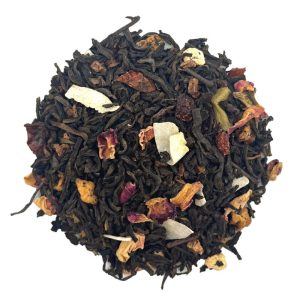There are two main categories of tea that you might be drinking. The first is tea that actually comes from the Camellia Sinensis plant, which is an evergreen shrub from the Theaceae plant family. The subcategories include white tea, green tea, oolong tea, pu-erh tea, and black tea. These are all from that same plant, just treated in different ways such as dried, withered, oxidized, roasted, etc.
The second category of teas is called Tisanes, or Herbal teas. These do not come from the Camellia Sinensis plant, and instead are a variety of herbs and plants that we have discovered are safe and even beneficial for us to consume as tea. You can mix combinations of different herbal teas that have similar properties to make powerhouse blends, or even mix a tisane with your favorite Camellia Sinensis tea.
Oolong Tea
Oolong Tea is a category of teas that have been partially oxidized before being partially roasted. These processes break down the tannins in the tea, making it milder on the tongue and stomach than green tea. Because of this, oolong teas are better for drinking cup after cup while meditating, studying, etc.
Oolong teas are is great for increasing focus and concentration. Lighter oxidized oolongs can still have detoxing properties similar to a green tea but less bitter. Often times oolong teas are paired with ginseng, which can help boost the effects.
Check out our selection of Oolong teas below.
-

Blackberry Sage Oolong, 2 Oz
$12.95 Read more -

Blue People Ginseng, 2 Oz
$19.95 Read more -

Cherry Almond Oolong, 2 Oz
$12.95 Read more -

Coconut Pouchong, 2 Oz
$14.95 Add to cart -

Da Hong Pao Oolong (Big Red Robe), 2 Oz
$14.95 – $19.95 Select options This product has multiple variants. The options may be chosen on the product page -

Golden Flower Oolong, 2 Oz
$9.95 Add to cart -
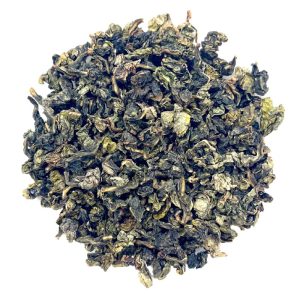
Iron Goddess 2 Oz
$15.95 Add to cart -

Maple Creme Oolong, 2 Oz
$12.95 Add to cart -

Milk Oolong, 2 Oz
$24.95 Read more -

Toasted Almond Oolong, 2 Oz
$12.95 Add to cart
Black Teas
Black teas are fully oxidized and fully roasted. Due to the color of the tea after it’s been steeped, it’s also often called Red tea. Black teas are highest in caffeine, and the tannin content (polyphenols) can help inflammation in the stomach.
While the oxidation and roasting process does break down some of the nutritional elements, it creates a lot of essential oils that can help break down food and stimulate the intestines. The essential oils are what gives black tea its rich aroma and flavor profile.
-

Apricot Black, 2 Oz
$9.95 Add to cart -

Blackberry Black Tea, 2 Oz
$9.95 Read more -
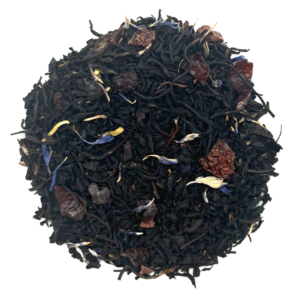
Bonfire, 2 Oz
$10.95 Add to cart -

Chai Unground, 2 Oz
$13.95 Read more -

Cinnamon Orange Spice Black Tea, 2 Oz
$10.95 Read more -

Lavender Earl Grey, 2 Oz
$9.95 Add to cart -

Love in the Air, 2 Oz
$9.95 Add to cart -

Mango Black Tea, 2 Oz
$12.95 Add to cart -

Passion Fruit Black Tea, 2 Oz
$9.95 Add to cart -
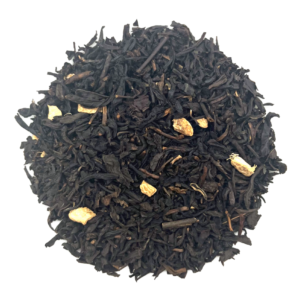
Peachy Keen, 2 Oz
$9.95 Add to cart -

PSL Black, 2 Oz
$12.95 Add to cart -

Roasted Lapsang Souchong 2 Oz
$14.95 Read more
White Teas
White tea is the least processed and least oxidized of all teas. Often called ‘baby tea leaves’, white tea is harvested before the leaves fully open. This results in white teas having the highest antioxidant concentration. Antioxidants are important for maintaining a healthy immune system, longevity, and cell replication. White teas are also richly alkaline.
White teas have the lowest amounts of caffeine of all the Camellia Sinensis teas, so they’re often considered the most calming and relaxing.
Green Teas
Green tea is the mature tea leaves that have been withered in sunlight, then dried in a way that prevents oxidation. Green tea is considered one of the healthiest beverages on the planet as it may assist with improved brain function, regulation of blood sugar, and weight loss. It has a high level of catechins and is loaded with antioxidants and nutrients that have powerful detoxifying effects on the body.
The polyphenols in green tea have been linked to reducing inflammation, cell protection, and lowering the risk of heart disease.
-
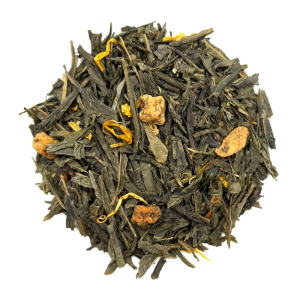
Apricot Green, 2 Oz
$11.95 Add to cart -

Citrus Mint Green, 2 Oz
$9.95 Read more -

Fresh Fall Morning Green, 2 Oz
$13.95 Read more -

Genmaicha, 2 Oz
$12.95 Add to cart -

Get Well Soon Green, 2 Oz
$11.95 Add to cart -

Gunpowder Green Tea 2 Oz
$9.95 Add to cart -
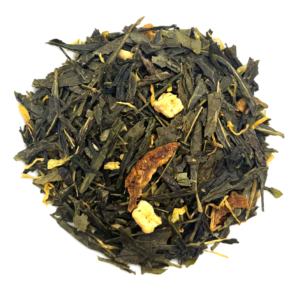
Lemon Meringue Green, 2 Oz
$12.95 Add to cart -

Pomegranate Green Tea, 2 Oz
$9.95 Add to cart -

Sencha, 2 Oz
$14.95 Read more -

Sunrise Bloom, 1 Oz
$9.95 Add to cart
Pu-erh Teas
Pu-erh teas are a special category of teas that have been fermented and then aged. The fermentation process gives these teas prebiotics, which makes them great for GI, colon, and cholesterol health. The aging process smooths the body and brings out more nuance in the flavor and aroma. They’re often earthier in flavor, making them popular among coffee drinkers.
Pu-erhs are commonly pressed into a cake or brick shape. In this form they will only get better with age, just like a fine whiskey.
Tisanes
Herbal teas, also known as Tisanes, are infusions made from a variety of herbs, spices, fruit, and flowers. Generally, they are caffeine free and have a multitude of benefits. For example, Hibiscus tea has been shown to help lower blood pressure. Many Tisanes are lovely brewed cold.
Herbal teas can be combined with one another to create powerhouse blends, or they can be combined with a Camellia Sinensis tea.











